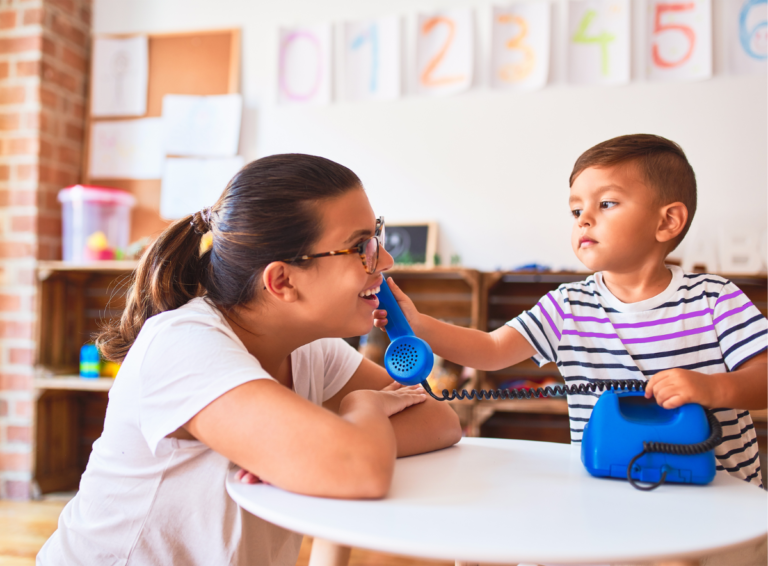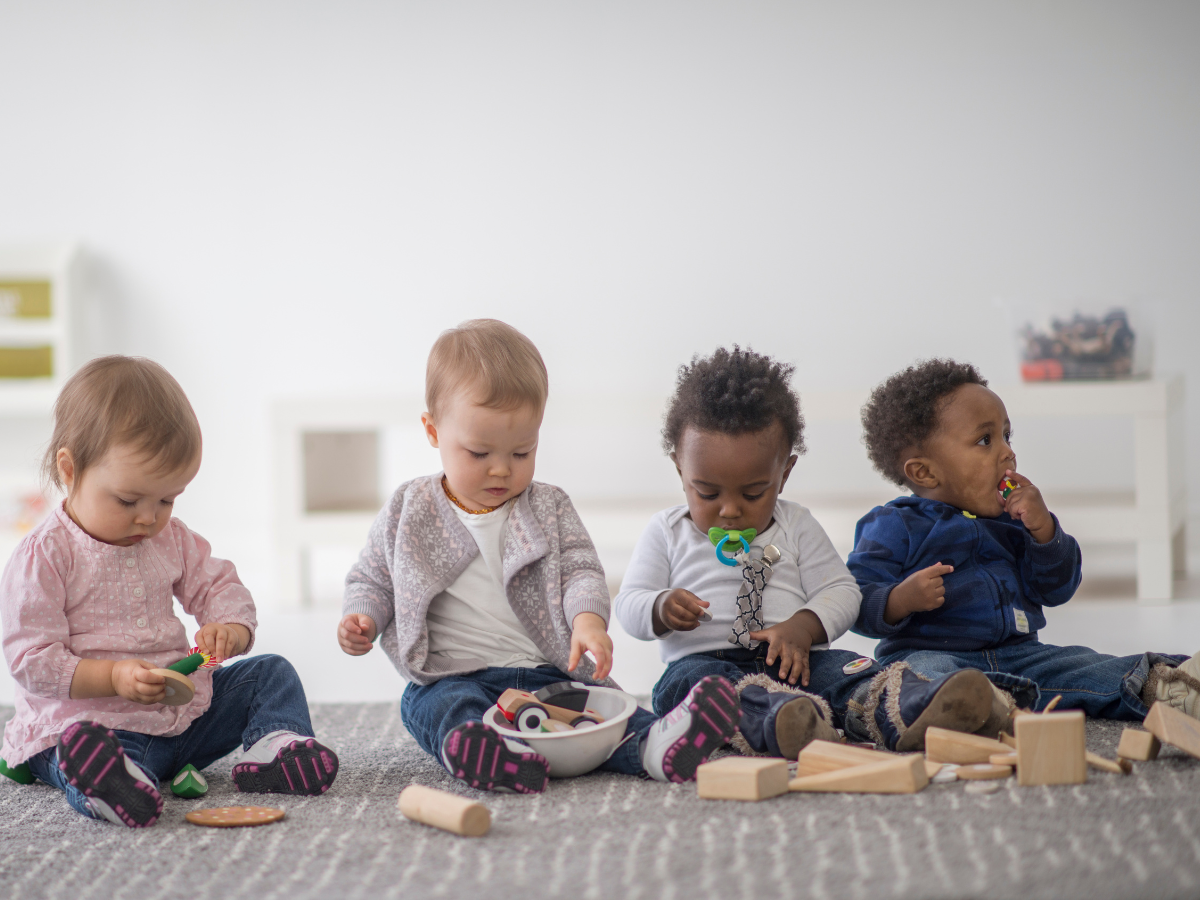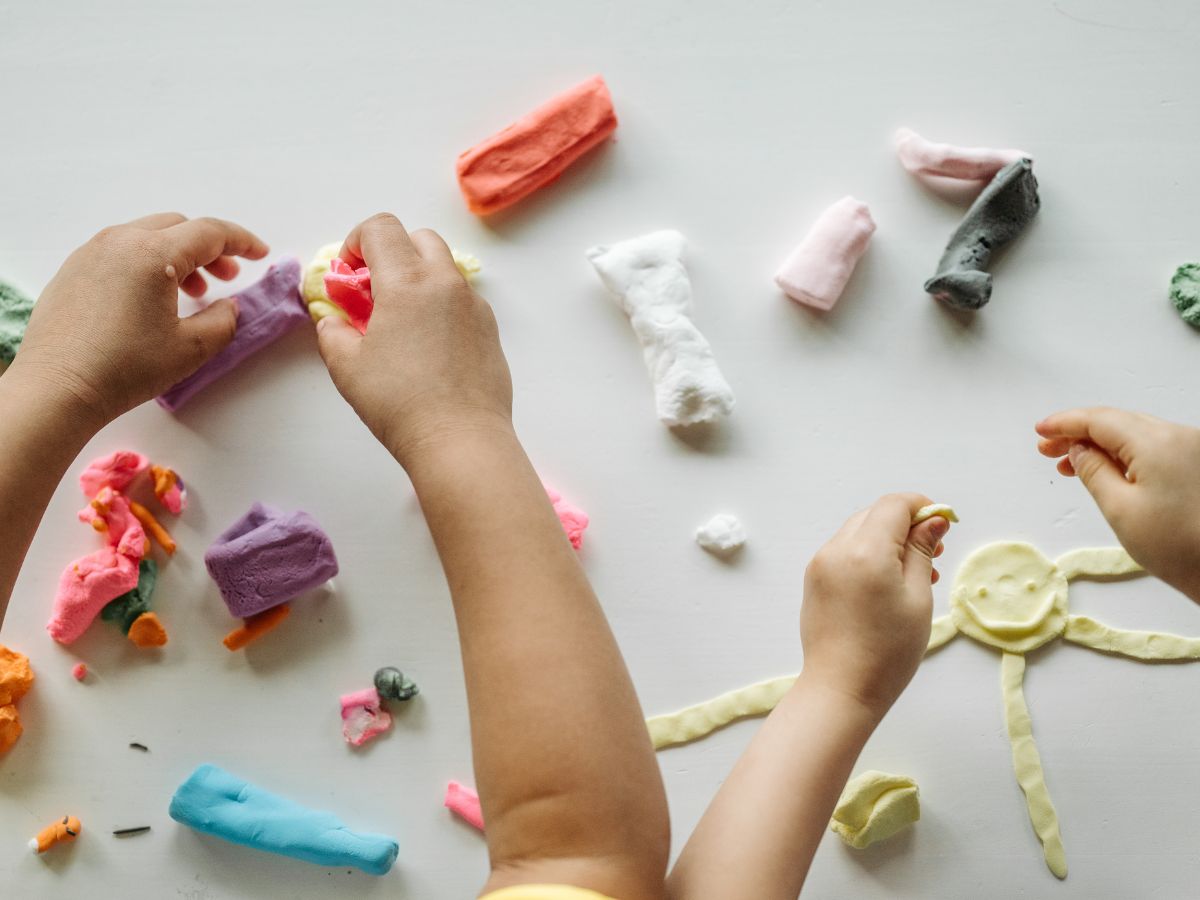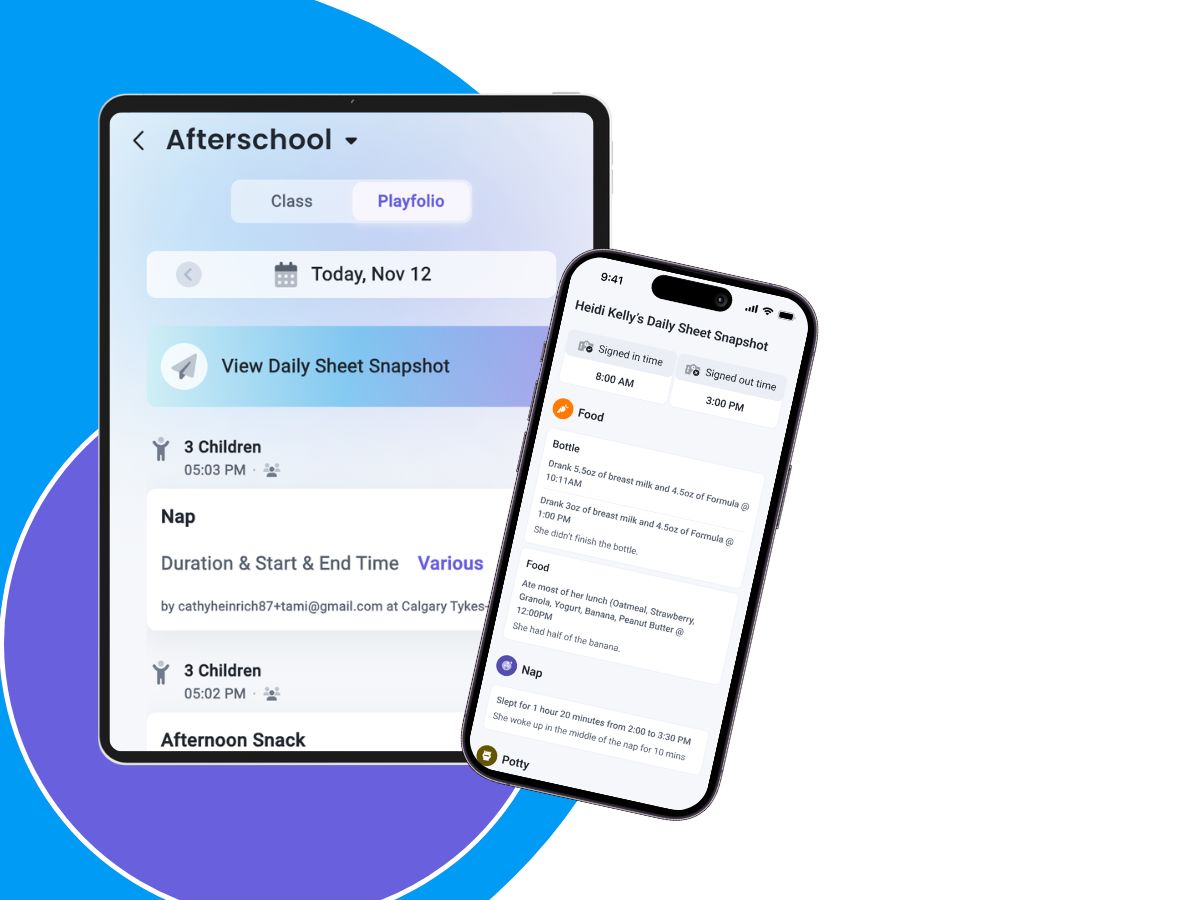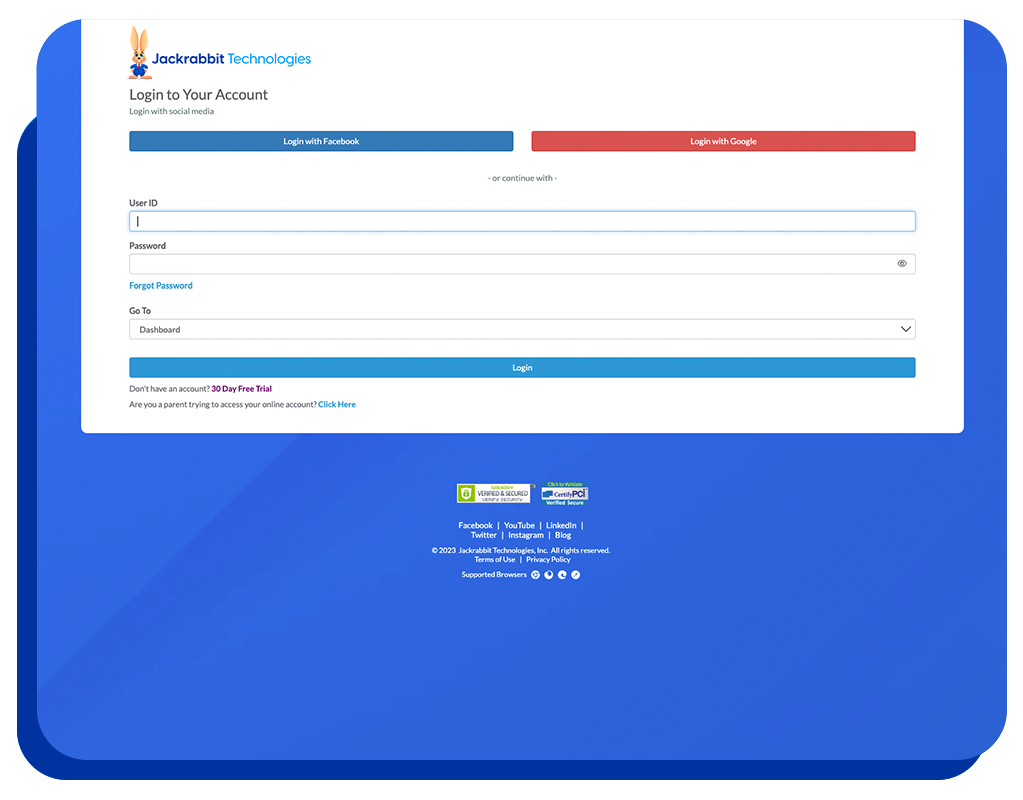We’re sharing ten things that you can “be” to help make a child’s transition into your child care program easier. It doesn’t matter whether the child is completely new to the center, is being moved to a new classroom, or is being moved for just part of a day; you can help each child feel comfortable in his or her new situation.
1. Be Prepared
You will undoubtedly know that a new child is coming to your classroom, so it is easy for you to be prepared for them. Make a cubbie especially for the children who are new. This means a lot to the child and to the parents, and this will set the tone for this family’s experience with the center and with you as a professional. Be sure the child is incorporated into class activities and programs like the Birthday Board. Have a cot already for them so that you’re not trying to locate one at naptime on his or her first day. Place a welcome sign on your classroom door and give it to the parents to save for the child’s Baby Book as a remembrance of their first day of school.
2. Be Welcoming
Be warm and speak to the child on his or her eye level. Think back to how intimidating your first day experience may have been. Spend some one-on-one time with the new child in order to make him or her feel personally welcomed.
3. Be Informative
Give the child a tour of the classroom. Show them the different areas which they will be using and positively share a few very simple rules and guidelines. Explain the routine to the child so he or she knows what will happen next. Every classroom is different and every teacher has different ways of doing things, so take the time to clarify specifically what you expect of your students.
4. Be Polite
Introduce the child to the other children in his or her new class and introduce the group to the new child. This is a very basic courtesy, but one which is often easily overlooked – even by those who feel like they have good manners. Remember how many new classmates the child is meeting and make this introduction more than once.
5. Be Specific
Be sure that you are pronouncing and spelling the child’s name correctly. This HUGE. They will not feel like you have taken the time to learn anything about them if you do this inaccurately. It is also very offensive to the parents that the teacher or center does not take the time to learn their child’s name.
6. Be Thorough
Read through the Child Profile (developmental intake information.) There is often very important and insightful information located here – including crucial information on details such as allergies – that you need to know. Learn specific details, such as what the child’s previous child care situations have been. This can be very important. For example, a child who has only stayed with Grandma will have no clue about what “walking feet” are, or how to use some types of classroom supplies or equipment such as easels. Take the time to gather information from the parent. This will reinforce the fact that you are sincerely concerned about how comfortable and secure their child feels in your center. Also gather information from the child’s former teacher. (You may need a release to do this.)

7. Be Helpful
Pair the new child up with a buddy who can help the child become acquainted with the class and the center. Children are great welcoming committees and can do a great job at helping you help the new child.
8. Be Considerate
Mid-morning of the first day, call the parent of a new child to let them know that the child is doing okay. Parents are very grateful for this small gesture. This is usually foremost on their minds, and confirmation from you is a tremendous comfort. Often parents feel that their calling to check up on their child would be a bother. Reiterate to the new parent that they can always call. The first few days are rough, and this small gesture is very reassuring. If you will not see this parent when they pick up their child, leave a detailed note for them every day that first week on things their child liked and had fun doing. Pictures are worth a thousand words, so take a picture of the child enjoying an activity for the parent if at all possible. Continuing to make your “What We Did Today” notes detailed and interesting and posted in a highly visible location – will help to maintain and build upon parent/teacher communication.
9. Be Proactive
If you have a child moving to a new teacher, talk to the child in advance about the move and encourage the child’s parents to do the same. This will help them to mentally prepare for the changes. Introduce a child to their new teacher a few times, if possible. Of course, it would be ideal to walk the child through the new classroom several times before the big moving day. Having the child spend small amounts of time in that room is sometimes helpful as well. Of course, you want to make sure the parents are informed that this will be taking place. Do not make this a secret from the child – be very clear about what is going on and where they will be at different times during that day.
10. Be Engaging
Often children who are new to child care need a little extra care. Make efforts to include the child as much as possible in interactions with other children. Often children new to this experience don’t have the social skills to interject themselves into play experiences with others. They will need help from you. There are excellent books that can help. (Mr. Rogers Goes to Day Care by Fred Rogers, Debbie Does Day Care)
The ten tips listed above are connected by a common thread – communication. Children are just like adults in that they want to know what is happening and what is expected of them – especially when the situation or environment is new. Be sure to respect children and their feelings enough to keep them in the communication loop.
A child’s first experience in a new classroom can be frightening – or it can be seamless, calm, and fun. Child care teachers play a huge role in how each child’s (and each family’s) experience turns out.


